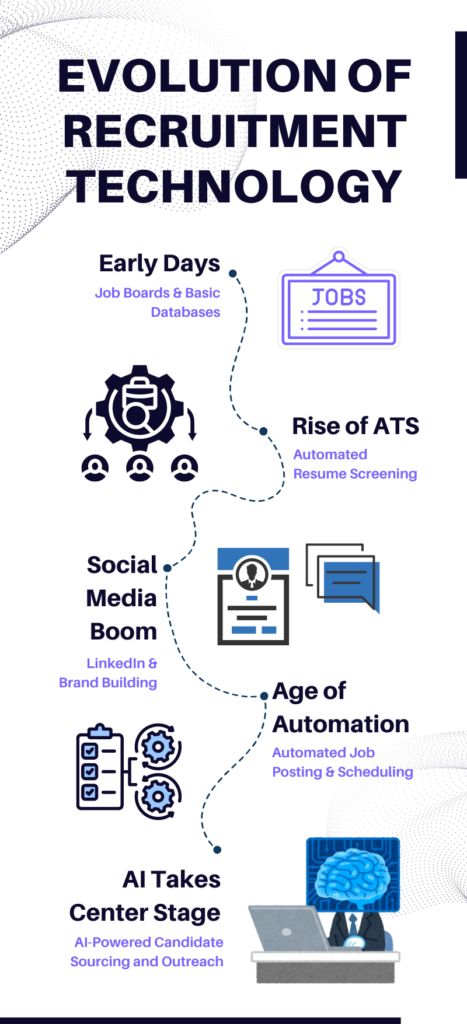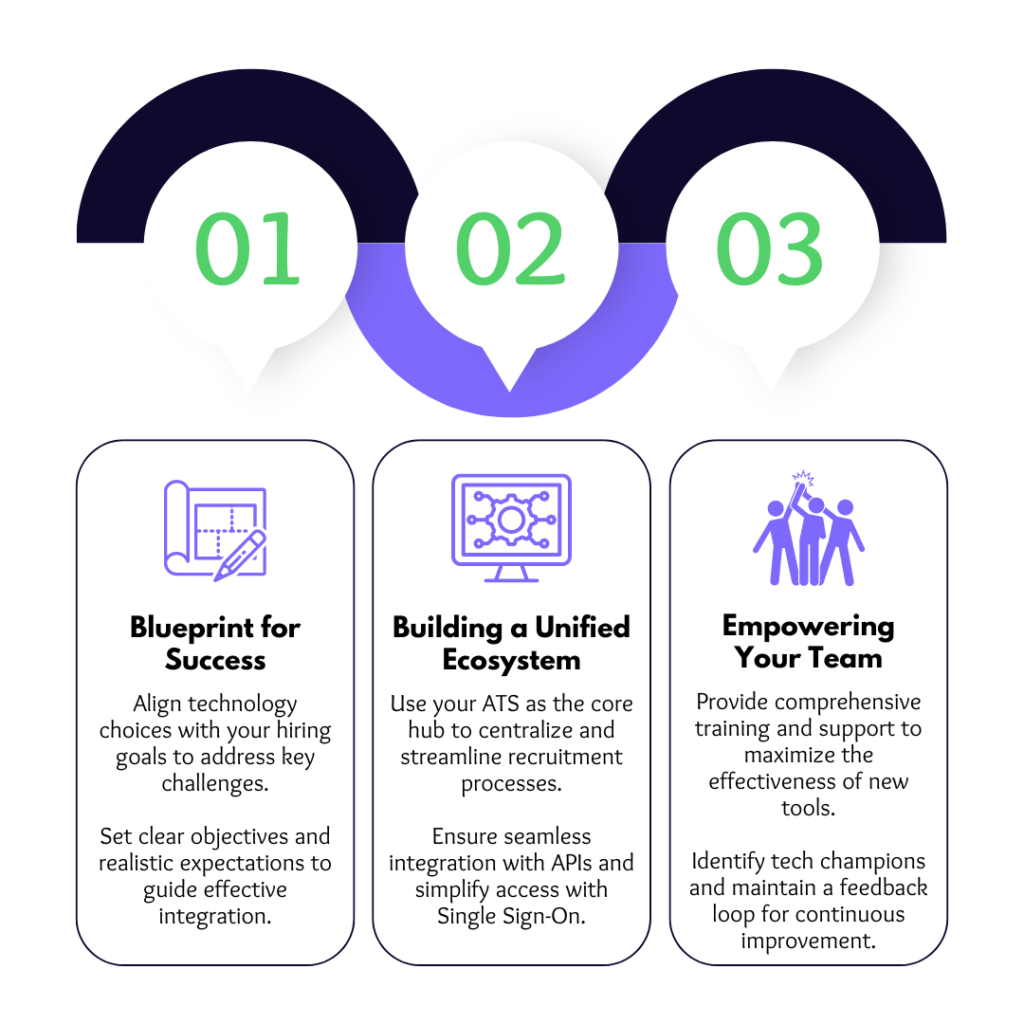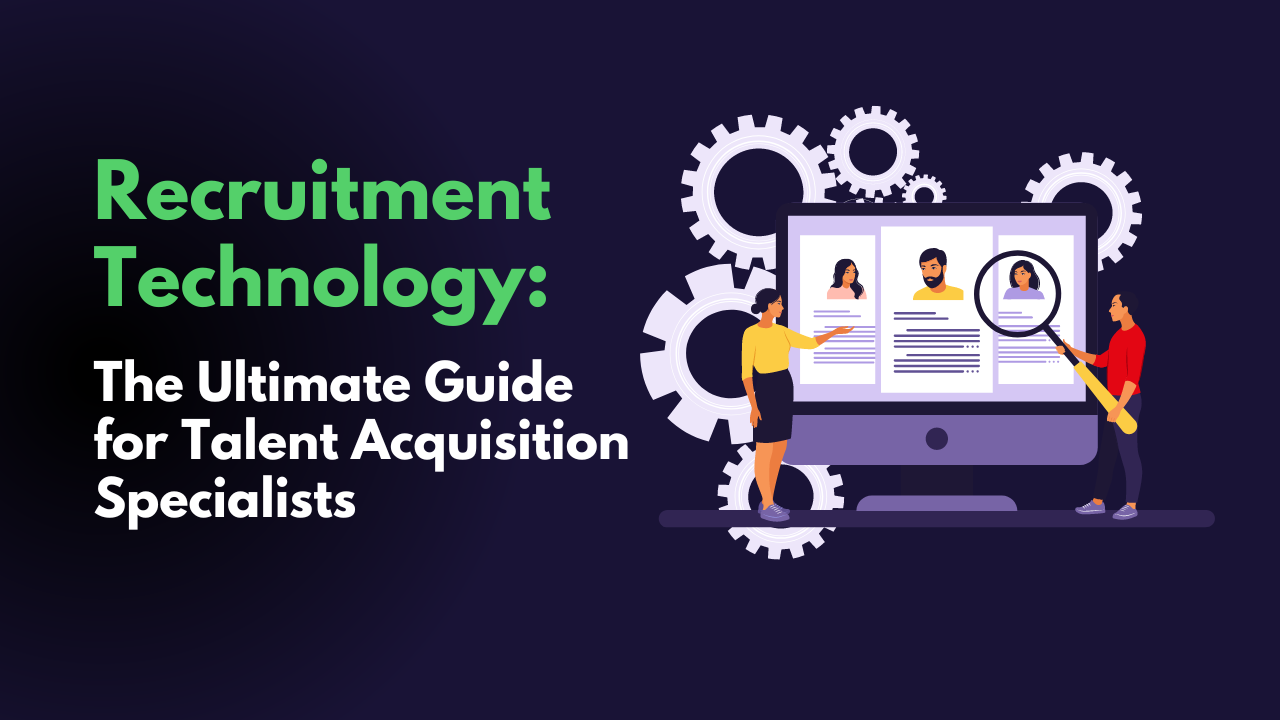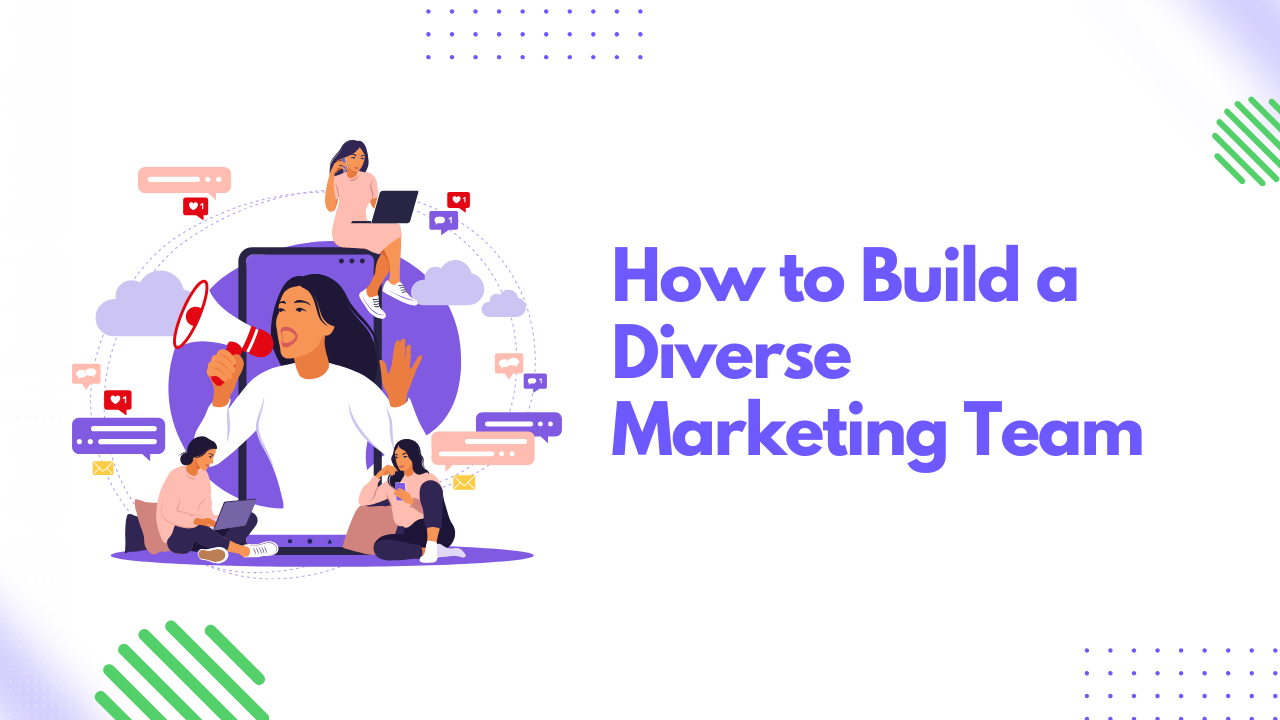Recruiting talent is getting tougher and tougher by the day, and relying on the old ways just doesn’t cut it anymore. If you work in human resources or talent acquisition, I’m sure you understand exactly what I mean. The competition is super fierce, and the pressure is real. A single job opening gets hundreds and thousands of applications, but it still might fail to attract the best and most relevant candidates. That’s why Recruitment Technology isn’t just a nice-to-have—it’s what keeps you one step ahead.
This blog is meant to be your go-to resource for understanding how the latest tech can make your job easier and your results better. We’ll cover everything from the evolution of recruitment technology to using tech solutions to speed up your workflow and find top talent much more efficiently. It’s all about working smarter, not harder, and making sure you don’t lose great talent to your competitors.
You’ll learn how to tighten up your recruitment funnel, slash your time-to-hire, and still keep that personal touch candidates appreciate. Whether you’re looking to update your processes or just want to keep up with what’s new, this blog has all of the fundamentals, practical tips and insights that you can start using right away.
The Evolving Landscape of Recruitment Technology: From Spreadsheets to AI

Remember the days of sifting through stacks of resumes, manually entering data into spreadsheets, and relying on gut feelings to make hiring decisions? If you’re a seasoned Talent Acquisition Specialist, you probably do – and you probably don’t miss it one bit!
Indeed, the world of recruitment has undergone a seismic shift in recent years, fueled by the rise of powerful Recruitment Technology. What was once a niche market is now a cornerstone of modern talent acquisition, revolutionizing how businesses find, attract, and hire top talent.
Let’s take a quick trip down memory lane to see just how far we’ve come:
-
- The Early Days– Job Boards and Basic Databases: The internet brought about the first wave of change. Online job boards replaced print ads and simple databases helping to manage candidate information.
-
- The Rise of the ATS: Applicant Tracking Systems soon emerged as a game-changer. They automated many manual tasks such as resume screening and candidate communication.
-
- The Social Media Boom: Social media platforms like LinkedIn became essential tools for sourcing candidates and building employer brand presence.
-
- The Age of Automation: Following this, Recruitment Automation tools emerged, streamlining tasks like job posting, candidate outreach, and interview scheduling.
-
- AI Takes Center Stage: Today, AI-powered Candidate Sourcing Software is transforming talent acquisition, using sophisticated algorithms to identify the best-fit candidates and reduce bias in hiring.
This evolution isn’t slowing down. As technology continues to advance at an unprecedented pace, we can expect to see even more innovative solutions emerge, from virtual reality recruitment experiences to predictive analytics that anticipate future hiring needs.
What does this mean for you as a talent acquisition professional?
Finding the right talent in today’s fast-paced market can be challenging. However, the right recruitment technology can truly make a difference. By understanding the latest advancements and integrating them strategically into your workflow, you can unlock a world of possibilities, streamlining your processes, improving the quality of your hires, and building a future-proof talent acquisition function.
Must-Have Tools for Modern Talent Acquisition
Finding the right talent in today’s fast-paced market can be challenging, but the right recruitment technology can truly make a difference. Whether you’re a Talent Acquisition Specialist, running a staffing or a headhunting agency, or managing HR, these tools can simplify your hiring process and boost your strategy, helping you attract and secure top talent with ease.
1. Applicant Tracking Systems (ATS)
Applicant Tracking Systems have become the backbone of modern recruitment, centralizing and automating numerous aspects of the hiring process. Here’s how:
-
- Streamlining Applications: ATS platforms collect, organize, and parse resumes from multiple sources—career sites, job boards, and social media—into a single, searchable database, reducing the need for manual data entry and improving efficiency.
-
- Automating Communication: From automated confirmation emails to interview scheduling, ATS platforms keep candidates informed and engaged throughout the recruitment process. They can also help maintain compliance by documenting all candidate communications.
-
- Enhancing Collaboration: ATS tools enable your hiring team to collaborate seamlessly. Recruiters, HR, and hiring managers can leave notes, share feedback, and access candidate information in real-time, fostering a more cohesive hiring strategy.
Examples: Greenhouse, Lever, Workday Recruiting
2. Recruitment Marketing Platforms
To stand out in a crowded market, your employer brand needs to reach candidates where they are, and recruitment marketing platforms are key to achieving this:
-
- Multi-Channel Posting: Automate job postings across multiple channels—including job boards, social media, and your company website—ensuring maximum exposure without the extra workload.
-
- Targeted Campaigns: Leverage data-driven insights to create tailored recruitment campaigns that attract specific candidate profiles, increasing the quality of applicants and reducing time-to-fill.
-
- Performance Analytics: These platforms provide in-depth analytics on your recruitment campaigns, helping you track performance and refine strategies for better ROI. Understand which channels bring in the most qualified candidates and optimize your spending accordingly.
Examples: Indeed, LinkedIn, Google for Jobs
3. Candidate Relationship Management (CRM) Systems
Building a strong talent pipeline is crucial for long-term recruitment success, and CRM systems are the tools that make it possible:
-
- Talent Pool Building: CRMs allow you to segment candidates into talent pools based on skills, experience, and other criteria, making it easier to engage with the right talent when opportunities arise.
-
- Personalized Communication: Keep passive candidates warm with personalized emails, newsletters, and job alerts that resonate with their career interests, ensuring they remain engaged with your brand.
-
- Candidate Insights: Track and analyze candidate interactions, engagement levels, and preferences, enabling more personalized and timely outreach that increases the likelihood of conversion.
Examples: Avature CRM, iCIMS, Phenom People
4. AI-Powered Sourcing and Matching Tools
Artificial intelligence is revolutionizing the way recruiters source and match candidates to open positions:
-
- Intelligent Search: AI-driven tools can sift through vast amounts of data, including resumes and social profiles, to identify candidates who not only meet the technical requirements but also align with your company culture.
-
- Candidate Matching: AI tools enhance the matching process by evaluating candidate profiles against job descriptions, ensuring a better fit that goes beyond just keywords, reducing time spent on screening and increasing the quality of hires.
-
- Diversity & Inclusion: By focusing on skills and qualifications rather than demographic data, AI tools help mitigate unconscious bias, promoting a more diverse and inclusive hiring process.
Examples: TapTalent, Zoho Recruit, Eightfold.ai, SeekOut
5. Candidate Outreach and Interview Scheduling Tools
Effective communication and efficient scheduling are vital to keeping candidates engaged and moving through the recruitment funnel:
-
- Automated Outreach: Use tools that enable personalized, scalable communication, improving candidate engagement and reducing drop-off rates.
-
- Interview Scheduling: These platforms simplify the often complex task of scheduling interviews by integrating with calendars, sending automated reminders, and allowing candidates to self-schedule, thereby reducing administrative burdens and minimizing scheduling conflicts.
Examples: Beamery, Calendly, Yello
6. Video Interviewing and Assessment Platforms
The shift towards remote work has made video interviewing and online assessments indispensable:
-
- One-Way Video Interviews: Allow candidates to record responses to set questions, giving recruiters the flexibility to review at their convenience and compare candidates side by side.
-
- Live Video Interviews: Conduct real-time interviews with candidates anywhere in the world, providing a more personal and engaging experience compared to phone interviews.
-
- Skills Assessments: Integrated assessments help evaluate candidates’ skills and competencies, providing data-driven insights that can be crucial in making final hiring decisions.
Examples: HireVue, Toggl, Zoom, Codility
Incorporating these essential recruitment technologies into your talent acquisition strategy can revolutionize your hiring process. By embracing innovation and automation, you can free up your team to focus on strategic initiatives, improve the quality of hire, and build a workforce that drives business success.
Integrating Technology into Your Recruitment Workflow
We’ve explored a powerful arsenal of Recruitment Technology tools, from Applicant Tracking Systems (ATS) to AI-powered Candidate Sourcing Software. But how do you seamlessly integrate these solutions into your existing workflow to maximize their impact? Think of it as assembling a high-tech, talent-finding machine, with each part working in perfect harmony.

1. Blueprint for Success: Aligning Tech with Your Talent Strategy
Before you hit the “install” button, take a step back and align your technology choices with your overarching Talent Strategy.
-
- Diagnose the Pain Points: What are the biggest bottlenecks in your current hiring process? Are you spending too much time on manual tasks, struggling to find qualified candidates, or facing low applicant engagement? Identifying these challenges helps you pinpoint the right technology solutions.
-
- Define Your North Star: What are your long-term hiring goals? Do you want to reduce time-to-hire, improve the candidate experience, or build a more diverse and inclusive workforce? Your technology choices should directly support these objectives.
-
- Set Realistic Expectations: Integrating new technologies takes time and effort. It’s not a magic bullet, but rather a powerful tool that requires careful planning, implementation, and ongoing optimization.
2. Building a Unified Ecosystem: Seamless Integration is Key
Imagine a world where your ATS talks to your CRM, which seamlessly shares data with your Candidate Sourcing Software. That’s the power of integration.
-
- ATS at the Core: Your ATS should be the central hub of your recruitment technology ecosystem. Ensure it integrates with your other critical tools, allowing data to flow freely and eliminate data silos.
-
- APIs: Your Integration Superpower: Application Programming Interfaces (APIs) are the bridges that connect different software solutions, enabling them to share data and functionality. Prioritize vendors who offer robust API integrations.
-
- Single Sign-On (SSO): Small Change, Big Impact: Simplify life for your team by implementing Single Sign-On. This allows them to access all their recruitment tools with a single set of credentials, saving time and reducing password fatigue.
3. Empowering Your Team: The Human Side of Technology
The most advanced technology is only as effective as the people using it.
-
- Training is Key: Equip your team with the knowledge and skills to use the new technology effectively. Offer comprehensive training programs, clear documentation, and ongoing support.
-
- Embrace the Champions: Identify tech-savvy individuals within your team who can act as champions for the new tools. Their enthusiasm and expertise can help drive adoption and create a culture of innovation.
-
- Feedback Loop is Essential: Regularly solicit feedback from your team about the technology. What’s working well? What could be improved? This feedback loop is crucial for ongoing optimization and ensuring the technology is meeting your team’s needs.
By thoughtfully integrating Recruitment Technology into your workflow, you’re not just automating tasks, you’re empowering your team to work smarter, make better decisions, and build a world-class workforce.
Measuring Success with Recruitment Technology
You’ve integrated innovative Recruitment Technology into your workflow, but how do you know it’s truly delivering on its promise? The key to maximizing your recruitment automation and technology investments lies in measuring the right metrics and using data-driven insights to optimize your strategy continually.
Key Performance Indicators (KPIs) to Track
Don’t just rely on gut feelings—use data to demonstrate the impact of your Recruitment Technology. Here are some essential KPIs to monitor:
-
- Time-to-Hire: Measure the time it takes from the moment a candidate enters your pipeline to their acceptance of an offer. A shorter time-to-hire indicates a more efficient recruitment process.
-
- Cost-per-Hire: Calculate the total cost of hiring for a specific role, including advertising, technology fees, recruiter time, and more. Track this metric over time to see how technology is impacting your recruiting budget.
-
- Candidate Satisfaction: Gather feedback from candidates throughout the hiring journey to assess their experience. High candidate satisfaction can lead to a stronger employer brand and a larger talent pool.
-
- Quality of Hire: Assess the performance of new hires against established benchmarks. This data can reveal if your technology is helping you identify and attract top talent who thrive in your organization.
-
- Source of Hire: Track where your best hires are coming from (e.g., job boards, social media, Candidate Sourcing Software). This insight allows you to optimize your recruitment marketing budget and focus on high-performing channels.
Optimizing ROI: Turning Data into Actionable Insights
Collecting data is just the first step. To truly optimize your ROI, you need to analyze the insights and make data-informed adjustments to your Talent Strategy and technology use.
-
- Identify Bottlenecks: Are there any stages in your recruitment process where candidates are dropping off at a higher rate? Use data to identify bottlenecks and implement solutions, such as automating communication or streamlining application forms.
-
- Refine Your Sourcing Strategies: If your Candidate Sourcing Software isn’t delivering the desired results, experiment with different search criteria, keywords, and outreach messages to improve your targeting.
-
- Measure the Impact of Automation: Analyze the impact of Recruitment Automation on key metrics like time-to-hire and cost-per-hire. Are there any areas where you can automate further to free up your team for higher-value tasks?
-
- Continuously Evaluate and Adapt: The world of recruitment technology is constantly evolving. Regularly evaluate your technology stack and processes to ensure you’re utilizing the most effective solutions to meet your hiring needs.
By actively measuring your success and using data to inform your decisions, you can unlock the full potential of recruitment technology, building a more efficient, data-driven, and cost-effective talent acquisition function.
Conclusion
As we wrap up this deep dive into recruitment technology, it’s clear that the days of relying on manual processes are long gone. Embracing the latest advancements, from AI-powered sourcing to recruitment automation, isn’t just about staying current; rather, it’s about staying competitive in an increasingly crowded talent market.
For hiring managers and talent acquisition professionals, the actionable takeaway is simple: integrate these technologies thoughtfully into your workflow. To begin with, start by identifying your biggest recruitment challenges, and then select the tools that best address those needs. Whether you’re aiming to reduce time-to-hire, improve the quality of your candidates, or streamline communication, recruitment technology can indeed make a significant impact.
However, remember that technology is only as powerful as the strategy behind it. Therefore, align your tech choices with your talent acquisition goals, ensure seamless integration across platforms, and empower your team through training and support. Most importantly, keep the human element at the forefront, using technology to enhance—not replace—the personal touch that candidates appreciate.
Finally, make it a point to continually measure the impact of your recruitment strategies and adjust as needed. Use these insights to refine your approach. Making data-driven decisions that will optimize your recruitment process over time.
In today’s fast-paced hiring landscape, those who leverage recruitment technology effectively will not only attract top talent. They will also build a resilient and future-proof recruitment strategy. So, dive in, explore these tools, and start transforming your talent acquisition today!
- Artificial Intelligence
- Hiring
- hiring process
- Recruitment
- Recruitment Technology
- Talent Acquisition




